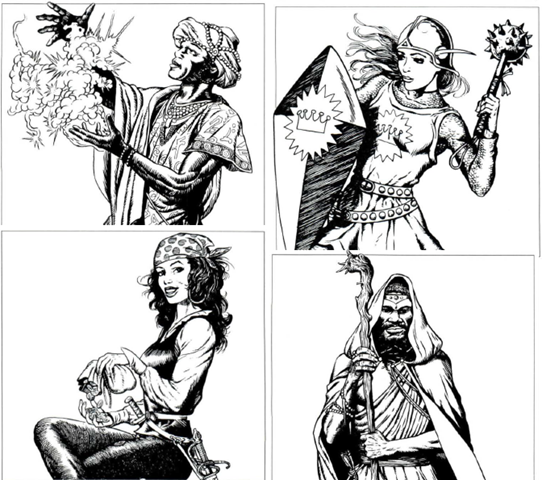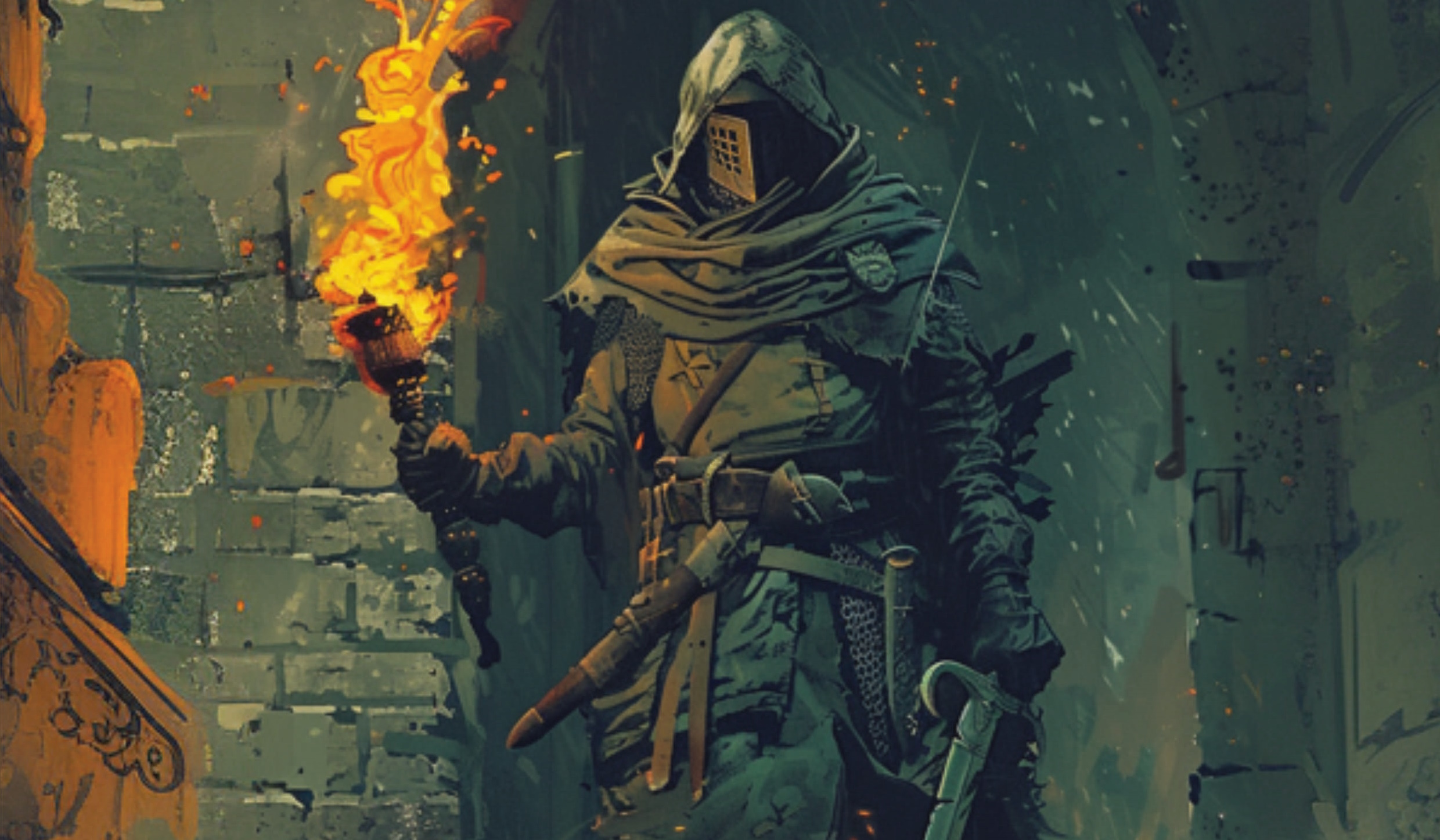Blast from the Past: D&D Rules Cyclopedia from 1991
Over the past few years, when I was looking more closely into old-school D&D, the OSR, the various retro-clones etc. numerous people recommended the Rules Cyclopedia to me. It’s basically a compilation of all the rules presented in the edition of Basic D&D which started off with the famous Red Box written by Frank Mentzer. Aside from all the rules it also contains a complete bestiary, and even a description of the world of Mystara aka the Known World. To my knowledge it’s the only D&D game which can be played as is, without having to buy additional books. It’s of course long out of print, but thanks to Print-On-Demand you can now get a print copy from DriveThruRPG.
Personally I have never played a Basic D&D game before. As far as I can remember the first edition of D&D I ever played was AD&D 2nd Edition. I didn’t like it at all. Don’t get me wrong, I enjoyed playing with my friends, I just wasn’t too fond of the the mechanics. Often I had the feeling I had to fight against the rules to play the character I wanted. Certain concepts seemed impossible. With more experience as a player and GM under my belt, I recognize that a lot of the rules were optional and sometimes mere guidelines, but back in the day, we slavishly clinged to the rules-as-written. But enough about my history with D&D, and back to the topic at hand.
After reading countless retro-clones on a search to find a perfect version of D&D (a search which is essentially futile), I decided to check out one of the actual old editions of D&D. The Rules Cyclopedia was an obvious choice because it included everything needed in a single book, and so many people had recommended it to me.
And I wasn’t disappointed. The 27-years-old book looks pretty good. It has a clear three-columned layout, nice black-and-white artwork, and the rules are presented in a clear manner. The RC was AFAIK first and foremost meant as a reference book, but it still does a good job of explaining how the rules work, even though no examples are given. Please note that I haven’t read all of the 306 pages yet, so some of the later sections may be a bit more obscure, but my first impression is positive.
What really surprised me is that the artwork throughout the book is much more inclusive and less sexist than I feared. The characters depicted are wearing proper armor, women are not depicted overly sexualized, there are various non-white characters in the artwork.
Since it’s a Basic D&D product some of the concepts in the game may sound strange to modern gamers. In Basic D&D Dwarf, Elf, and Halfling are actually classes. Humans can choose from a more extensive list of classes including the iconic Cleric, Fighter, Magic-User and Thief. Two optional classes are included: the monk-like Mystic and the Druid. I was also positively surprised that the Fighter class includes the variants of Paladin, Knight and Avenger.
Overall Basic D&D has less of everything. Less classes, less rules, less spells. Compared to AD&D and its successors (D&D 3rd Edition was based on AD&D 2nd Edition and not Basic D&D) it’s a much simpler game. It also retains a couple of concepts later editions of D&D lack. For example there’s the idea that the game should change focus at certain levels. You start out by delving into dungeons, at level 9 characters begin to erect towers, build fortresses, and recruit followers. Now it’s more about carving out your place in the world. Eventually the heroes grasp at immortality and basically godhood. This was supported by the Immortals boxed set which is not fully included in the Rules Cyclopedia, but I guess most campaigns never ran that long.
I am not sure if I would have preferred Basic D&D over AD&D back when I started playing roleplaying games. I guess the race as class thing might have killed any interest in it – among other things. Nowadays I don’t mind as much. It definitely makes things a lot easier, and it also helps to make non-humans different. In a world with such rules, there might be demi-human (where does this term come from anyway?) clerics, but they obviously don’t get spells by their gods the way human clerics do, or there are just no adventuring Elven clerics. Works for me. One positive aspect of this is that you don’t have to deal with adventuring groups in which not even one character is human.
Overall the rules and their presentation have a certain charm which is hard to elude. I can’t put my finger on it, but for some reason reading this book makes me want to play a Basic D&D game set into the Known World. For me it feels a bit like exploring a world which is totally new to me – which it actually is. For some of the old-school D&D grognards this might all be old news, but when I discovered tabletop roleplaying games Basic D&D was already a thing of the past.
Perhaps it’s a sign of a coming mid-life crisis but during the last years I have started looking back more often than before. I have been rewatching shows I loved as a teenager, I tried to reconnect with people I met during my university years, and I’ve started looking into games which were decades ago – even though I didn’t know about them at the time. The Rules Cyclopedia fits perfect into this fuzzy ‘80/’90s nostalgia-fueled romp and I can’t wait to get my hands onto my POD hardcopy which I ordered about a week ago. Sure, an original would have been better, but unfortunately the RC has become a much sought after collectors’ item. And even though it makes me feel all warm and fuzzy inside, I am not going to put 70 to 120 Euros on the table for this book.
If you made it this far, you noticed that this isn’t really a review, nor do you learn that much about the Rules Cyclopedia itself. But you learned a bit about my reasons why I picked up the book in the first place and why you might do as well. For a game that old it holds up surprisingly well and it tells of different times and a different kind of D&D. Sometimes I wonder how D&D would look like today if Third Edition was based on this instead of AD&D 2nd Edition…








11 comments